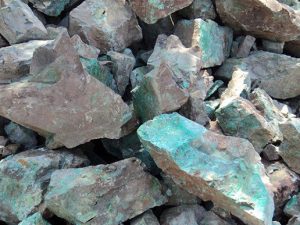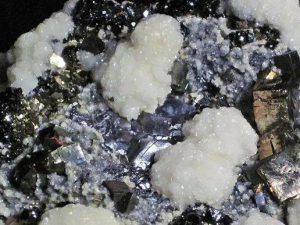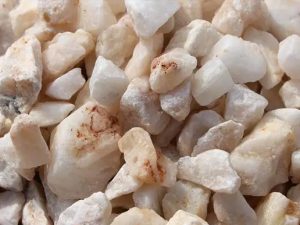
Calcite (calcium carbonate) is a vital raw material for industries ranging from construction to pharmaceuticals. Its processing involves precise crushing and grinding to achieve specific particle sizes, ensuring optimal performance in end-use applications. Below is an overview of the calcite crushing and processing workflow, equipment selection, and quality control practices.
1. Calcite Crushing Process
The crushing stage reduces large calcite blocks to manageable sizes. A typical workflow includes:
Primary Crushing: Jaw crushers or cone crushers break down raw calcite into 100-300mm fragments.
Screening: Vibrating screens separate fine particles from coarse ones, directing oversized material back for re-crushing.
Secondary Crushing: Impact crushers further reduce particles to 10-50mm, ensuring uniformity for downstream processing.
This closed-circuit system maximizes efficiency by recycling oversized material, minimizing waste.
2.Calcite Grinding & Processing
After crushing, calcite undergoes grinding to achieve micron-level fineness:
Ball Mills/Raymond Mills: These grind calcite into powder (200-325 mesh) for applications like coatings and plastics.
Ultrafine Grinding: High-pressure mills produce 2500 mesh powder for ceramics and specialty chemicals.
Quality control involves real-time monitoring of particle size distribution and moisture content to meet industry standards.
3.Key Equipment for Calcite Processing
Crushers: Jaw crushers (for initial reduction), impact crushers (for fine crushing), and mobile crushers (for on-site operations)
Grinding Mills: Ball mills, vertical roller mills, and air classifiers for precise powder grading
Auxiliary Systems: Vibrating feeders, conveyors, and dust collectors ensure safe, efficient operations.
4. Applications of Processed Calcite
Processed calcite finds use in:
Construction: As filler in cement, gypsum boards, and paints
Plastics/Rubber: Enhances hardness and thermal resistance
Paper Coatings: Improves gloss and opacity
Food/Pharma: As a neutralizing agent or dietary supplement
5.Optimizing Processing Efficiency
Regular Maintenance: Lubrication and wear part replacement extend equipment lifespan
Energy Management: Variable frequency drives reduce power consumption by 20-30%
Automation: PLC systems enable real-time adjustments to crushing/grinding parameters
Effective calcite crushing and processing require a balance of advanced machinery, quality control, and industry-specific expertise. By selecting the right equipment and adhering to best practices, manufacturers can produce high-purity calcite powder that meets global market demands. For tailored solutions, contact calcite processing equipment suppliers like Liming Heavy Industry Machinery.



